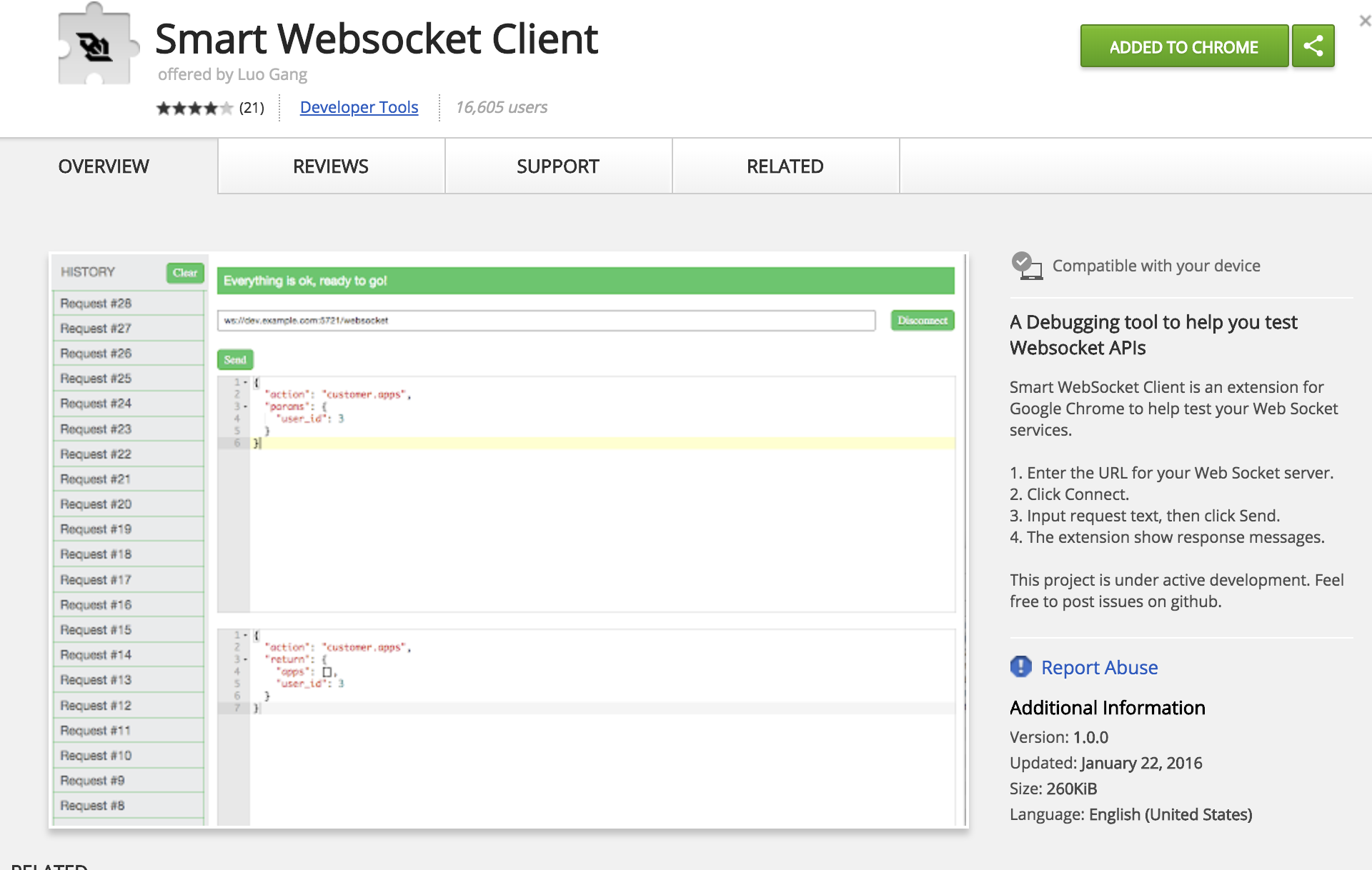Repo hopes to test websockets by examples.
Table of Contents
Install a websocket client extension for chrome: Smart Websocket Client Move into a folder and run server
start server
cd treehouse-tutorial
node server.js
Does not require the use of the websocket client extension because it loads a website that acts as the client and connects to an external websocket.
Tutorial goes over using websockets in the client. This repo refactors the setup into OOP structure and adds a few features:
- Disable on open/close clicks
- reinitialize the connection on open click
Tutorial runs a websocket server in the same port as the express server. The tutorial uses typescript and in this repo it was not used but the typescript code is commented.
cd medium-tutorial
node server.js
Open websocket client extension and enter ws://localhost:8999/ and test sending messages.
This directory serves 3 websocket servers. One uses the same port as the express server (8080), the others are on 8081 and 8082.
cd ws-servers
node servers.js
Open websocket client extension and enter ws://localhost:8080/ and test sending messages.
Open a new websocket client extension tab by clicking the icon again and enter ws://localhost:8081/ and test sending messages.
List of servers:
ws://localhost:8080 - sends a success connection, receives message from client and resends it as success
ws://localhost:8081 - sends a success connection, receives message from client and resends it as success
'ws://localhost:8082 - a websocket server with a setInterval() and setTimeout() that will resend a message with the Data.now() every second.
Reference tutorial and repo that were helpful: tutorial repo
cd server-client
node servers.js
This example runs a web server and websocket server at localhost:8999 and a websocket client connected to to this socket from inside the same server.js file.
ws://localhost:8999 - connection for client
cd websocket-endpoint
node servers.js
This example sets up websocket servers by endpoint using the express-ws npm package and middleware. It allow to setup a websocket server by endpoint either by using the default app.listen(port) or by passing a custom http server to the express-ws instance. This example also has a websocket client setup to send messages using a setTimeout() (needs to be uncommented) and it triggers everytime the server responds to the last message.
ws://localhost:3000 - you can connect to this websocket server and get some basic data
ws://localhost:3000/echo - you can connect to this websocket server and get some basic data with a setTimeout() of 1 second.
The client connects to a provided websocket server url. Useful for testing connections without having to use the browser.
